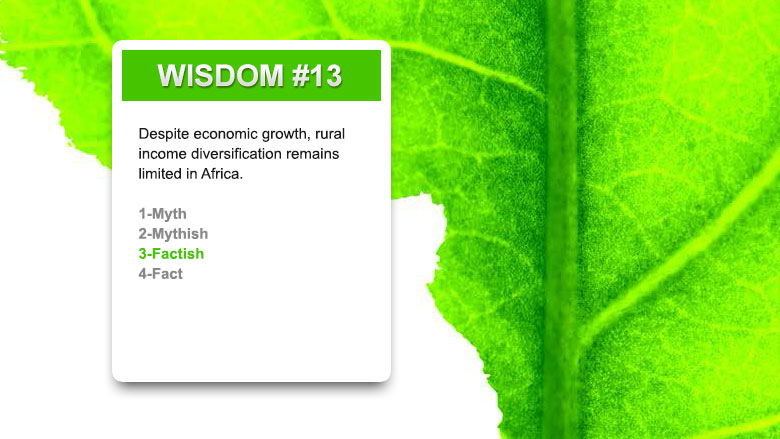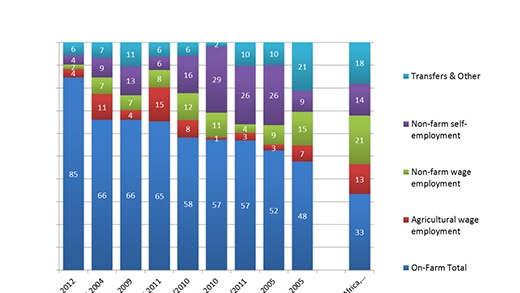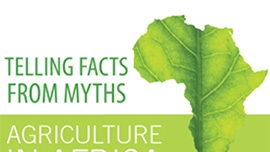COMMON WISDOM #13: Despite economic growth, rural income diversification remains limited in Africa.
SCORE: 3 - Factish
FINDINGS:
- Agriculture remains the mainstay of Africa’s rural livelihoods, particularly where agro-ecological conditions are favorable
- Up to 98% of rural households in the nine African countries studied engage in on-farm agriculture (including livestock) compared with an average of 85% in the 13 non-African countries studied
- Only between 1% and 26% of rural households engage in agricultural wage labor, which typically contributes less than 5% of rural income
- For their level of development, rural households in Africa appear no less diversified, with diversification more in household enterprises than in wage employment
- Rural African households derive about two-thirds of their income from on-farm agriculture—a level consistent with the level of gross domestic product (GDP) in the African countries
- Income from nonfarm wage employment averages 8% in African countries, compared with 21% elsewhere
- In favorable agro-ecological conditions, farming remains the occupation of choice but when urban integration is low, households engage more fully in nonfarm activities in Malawi and Niger, but less so in some other countries
POLICY MESSAGES:
Rural household income diversification seems in line with Africa’s level of development. In all countries, African and non-African, wealthier households show greater reliance on nonfarm sources of income.


